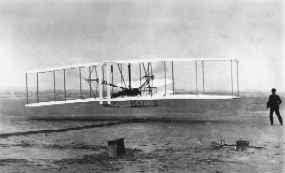
If we’re growing, we’re always going to be out of our comfort zones. – John C. Maxwell
Humans have long used rulers to measure distances accurately. The oldest ruler we have is from Egypt, found in the tomb of King Tut’s treasurer, Maya. This wood instrument from the 1300’s B.C. marks out precise distances, not unlike the modern ruler.
Since that time, we have relied on the accuracy of the ruler in countless ways such as in carpentry, roads, engineering, math, geometry, drafting blueprints, and more.
In leadership, it’s important to understand the measure of your leadership. While a ruler serves a valuable role, at the end of the day it’s still an inanimate object but its function is timeless. While the function of leadership has changed, the foundational principles have remained.
When you think of the measure of your leadership, what comes to mind? What are those must-have qualities that not just define you, but the ones that will outlive you? This is the essence of what the measure of your leadership is all about.
In order to help you narrow down how you define the measure of your leadership, allow me to pose it to you in the form of some questions. Of course, the answers are uniquely yours but you’ll never discover them unless you are intentional about it. Reflect on these questions as you consider the measure of your leadership.
What is your motivation to lead?
Your ‘why’ about leading will always be your motivation for leading. While you may possess leadership qualities that could be beneficial to you and those around you, until you figure out your motivation for leading those qualities will never serve a greater purpose.
Have you identified your passions?
While understanding your ‘why’ and tapping into your motivation is essential, it’s your passions that will give your leadership direction. It’s all about making the transition from knowing your why to discovering your one thing. Once you know these two things the measure of your leadership will begin to make sense and your purpose becomes clear.
Do you understand what leading is not about?
Leadership means different things to different people. Is it about having a title or position? Maybe perks and prestige? Here’s what every leader needs to know: it’s not about you. Neither is it about the trappings of leadership that so many thinks are important. Until you learn this, the measure of your leadership will always come up short.
Are you adding value?
The measure of your leadership is found in the value that you bring to others. While misguided and misplaced “want-to-be” leaders think in terms of taking from others for their own personal gain and ultimately subtracting from others. True leaders think in terms of adding value to others, serving others, and ultimately moving from a leadership style of addition to one of multiplication. Click To Tweet
What will outlast you?
The measure of your leadership comes down to what you did for others. How did you serve others and causes greater than yourself? Who did you lift up and who did you hold the ladder for? Leadership is not about the notches in your belt, but the seeds you planted and the lives you touched that will follow in your footsteps.
Final Thoughts
Mark Twain said, “The two most important days in your life are the day you were born and the day you find out why.” And the measure of your leadership comes down to understanding the measure of your leadership.
©2022 Doug Dickerson

 The late John Lennon once wrote, “A dream you dream alone is only a dream. A dream you dream together is reality,” and that sums up the power of being connected to like-minded people who can move you from dreaming to achieving.
The late John Lennon once wrote, “A dream you dream alone is only a dream. A dream you dream together is reality,” and that sums up the power of being connected to like-minded people who can move you from dreaming to achieving.







